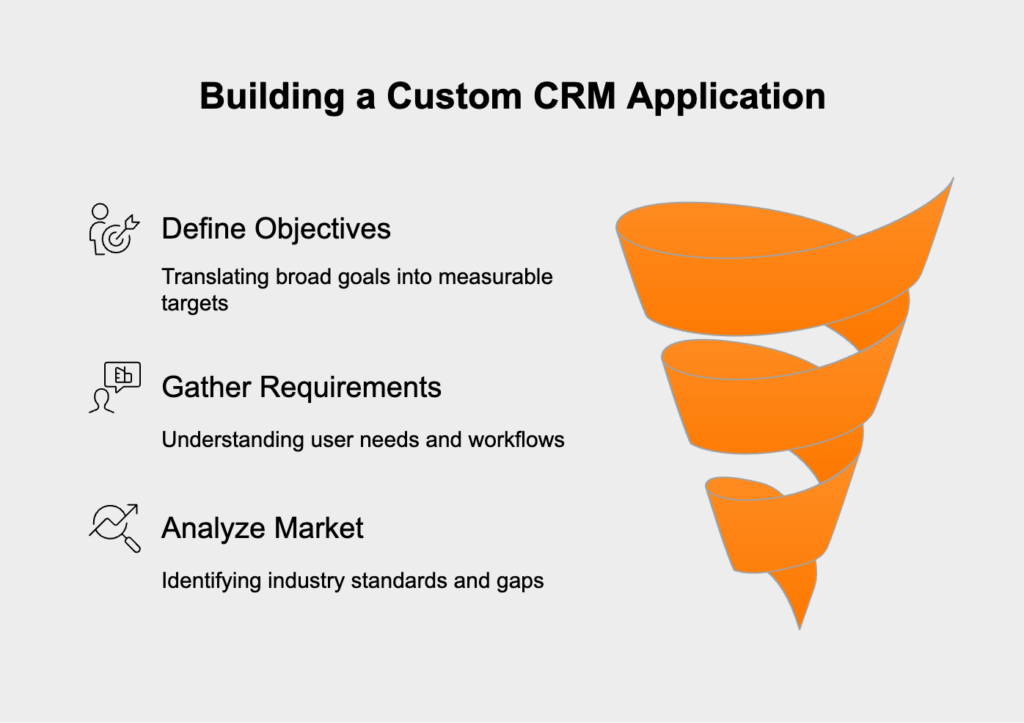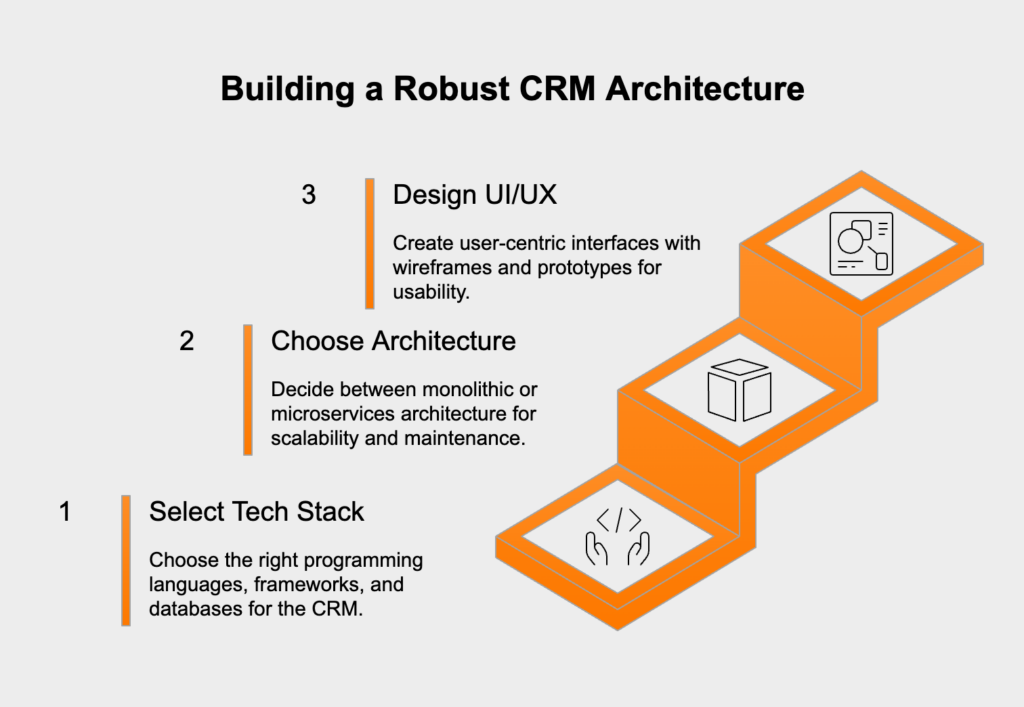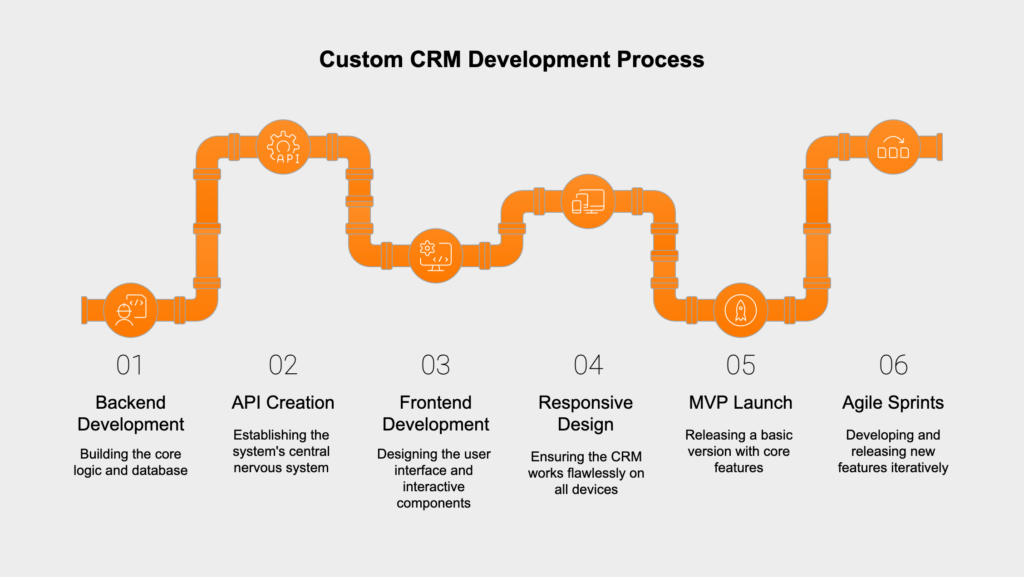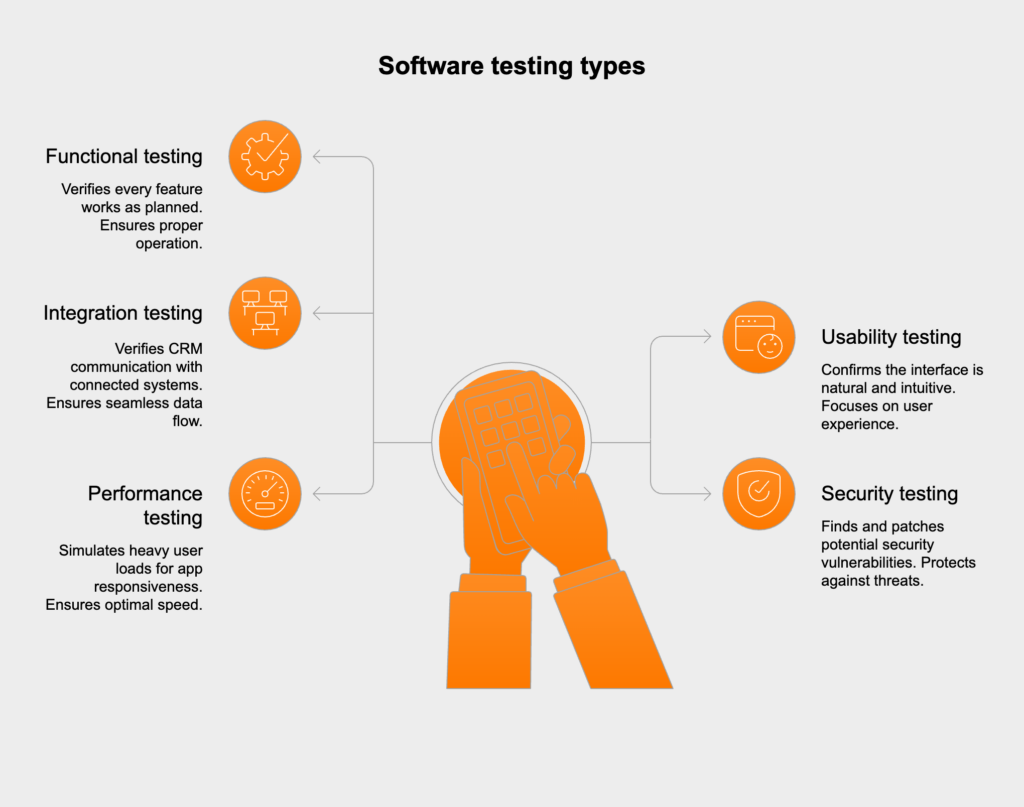App Development Consulting: Your Complete Q&A
- November 08
- 13 min

The fate of a custom CRM web application is sealed long before a developer writes the first line of code. It all starts with strategic planning, a phase that builds the project’s entire foundation by tying the technical work directly to tangible business results. This process means digging deep into the organization’s goals, daily operational headaches, and what users truly expect, all to craft a precise blueprint for the development ahead.
First, you have to translate broad business goals into specific, measurable CRM objectives. A vague goal like “improve sales” just won’t cut it. Instead, you need something concrete, like “reduce the average sales cycle by 15%” or “increase customer retention by 10% through proactive support ticketing.” Nailing down the scope is essential for prioritizing features and avoiding scope creep, which ensures the final product solves the most critical business problems.
Once the objectives are clear, the spotlight turns to the people who will actually use the CRM. This means running workshops and interviews with your sales, marketing, and customer service teams to get a handle on their daily workflows, their frustrations with current tools, and the features they can’t live without. This discovery process uncovers the must-have functionalities, whether it’s contact management, pipeline visualization, automated reporting, or specific marketing automation tools. The outcome is a detailed requirements document that becomes the guide for the entire project.
Even though the CRM is custom, it doesn’t operate in a bubble. Looking at off-the-shelf CRM solutions and what competitors are using helps identify the industry-standard features that users will probably expect. This isn’t about copying them. It’s about inspiration and finding gaps in the market. This analysis can reveal opportunities to build something that offers a unique competitive advantage by doing things that standard products either handle poorly or don’t handle at all.

With a solid strategy locked in, the project shifts to architectural design. This is the stage where crucial technical decisions are made to ensure the CRM is not just functional but also scalable, secure, and easy to maintain. This blueprint governs how the system is built, how its different parts communicate, and how it can adapt as the business grows.
The technology stack is simply the collection of programming languages, frameworks, and databases used to build the application. A common, modern stack might look something like this:
The final choice hinges on things like performance needs, the development team’s existing skills, and long-term scalability goals.
One of the most important architectural decisions is whether to go with a monolithic or a microservices design. A monolithic architecture constructs the application as a single, tightly integrated unit, which can be simpler to get started with. In contrast, a microservices architecture breaks the application into a set of smaller, independent services, like a “contacts service” or a “reporting service.” While it’s more complex to set up initially, this approach provides far better scalability, flexibility, and easier maintenance, since individual parts can be updated without disrupting the whole system.
A powerful CRM is worthless if it’s a pain to use. The UI/UX (User Interface/User Experience) design process is focused on creating an interface that’s intuitive, efficient, and looks good. It starts with wireframes, which are basic structural layouts, and then moves to interactive prototypes. These mockups are tested with actual end-users to check if the workflows make sense and to gather feedback, making sure the final design is something people will actually adopt and use productively before any major coding begins.

The development phase turns strategic plans and architectural designs into a real, functional web application, often managed iteratively to allow for flexibility and continuous feedback. It all starts with the backend—the engine of the CRM. Here, developers construct the core business logic, set up the database, and implement security measures. A vital part of this stage is creating the Application Programming Interface (API). The API serves as the system’s central nervous system, laying out a clear set of rules and endpoints for how the frontend and any connected third-party tools can request and work with data.
The frontend is everything the user actually sees and clicks on in their web browser. Using the chosen frontend framework, developers build out the user interface according to the approved UI/UX prototypes. This means creating the dashboards, data tables, forms, and all the interactive components. A major focus here is on responsive design, which guarantees the CRM works flawlessly and looks great on desktops, tablets, and smartphones.
Most custom CRMs today are built using an agile approach. Development kicks off with a Minimum Viable Product (MVP), which is a bare-bones version of the CRM that has just enough core features to be useful to early adopters. From there, the application is expanded in a series of “sprints”—short, focused periods where specific new features are developed, tested, and released. This iterative cycle allows for constant feedback from users, ensuring the final product perfectly matches the business’s evolving needs.

The biggest benefit of a custom CRM is the power to shape every part of the software to fit an organization’s unique way of doing things. Unlike rigid, one-size-fits-all products, a custom solution offers incredible flexibility. Businesses can design and build modules for highly specific operational needs that generic CRMs just don’t address. For instance, a real estate agency might build a property management module to track listings, viewing schedules, and agent commissions. A healthcare provider could create a specialized module for managing patient outreach programs that meets strict health data regulations. This modular approach ensures the CRM is a perfect match for the business model.
Custom workflow automation lets a business embed its unique operational rules right into the CRM’s logic. This is about more than just setting simple reminders. For example, a rule could be set up to automatically assign a new lead to a specific sales team based on their geographic location and the estimated deal size. Another workflow could automatically trigger a multi-step follow-up sequence if a customer’s support ticket hasn’t been resolved in over 48 hours.
A custom CRM gives you precise control over who sees what data and what actions they can take. Role-based access control (RBAC) ensures a junior sales rep can’t view sensitive financial reports, while a marketing manager might only see data related to their campaigns. Dashboards can also be personalized for each role, so a sales rep sees their current pipeline and tasks, while the CEO gets a high-level overview of company-wide performance. Furthermore, a custom build lets an organization define its own data structure, unlike off-the-shelf CRMs with their rigid fields. A B2B software company could add custom fields for “Subscription Tier,” “Last Login Date,” or “Key Feature Usage,” ensuring the data collected is 100% relevant to the business for more accurate reporting and deeper customer insights.

A modern CRM can’t be an island. Its real power is unleashed when it becomes the central hub for all customer data, which happens by integrating it with the other software a business depends on. A custom build provides endless possibilities for creating a smooth, unified tech ecosystem.
The most common way to integrate is through APIs. A custom CRM can be built to “talk” to the APIs of other key services, such as:
This creates a 360-degree view of the customer by pulling data from every touchpoint into a single place. For many businesses, linking the CRM to their Enterprise Resource Planning (ERP) system is also vital, syncing customer data with financial info like invoices and orders. Likewise, integrating with eCommerce platforms helps track purchase history and customer lifetime value, which fuels highly targeted sales efforts. A major plus for custom development is the ability to build integrations for older, proprietary systems that don’t have modern APIs. A custom connector can be made to bridge the gap, ensuring data flows from these critical legacy systems and extending their lifespan.
// Example of a conceptual API request to fetch contact data{ "api_key": "your_secure_api_key", "action": "get_contact_details", "contact_id": "CUST-1138", "fields": [ "full_name", "email", "last_interaction_date", "pipeline_stage" ]}Launching the CRM is a major milestone, but it’s not the end of the road. A dedicated post-development process is critical to make sure the application stays robust, fast, and ready to support business growth. An intensive Quality Assurance (QA) process is carried out to find and squash bugs before the official launch. This includes several kinds of testing:

As the business expands, so will the number of users and the amount of data stored in the CRM. The application has to be optimized to handle this growth without getting sluggish. This involves things like database query optimization, writing efficient code, and potentially scaling the server infrastructure. The earlier choice of a microservices architecture really pays off here, as individual services can be scaled up independently to handle increased demand. A custom CRM is a living asset that needs to evolve with the business, so a long-term plan for ongoing maintenance and support is essential for fixing issues and keeping the application secure. This plan should also set aside resources for future development sprints to add new features and integrations as the business strategy shifts.
